By Michael Hull
Shortly after midnight on Monday, June 5, 1944, the dark skies over the coast of northern France were filled with thunder.
Fourteen hundred C-47 and C-53 transport planes and 3,500 gliders were carrying 20,000 British and American paratroopers to assigned drop zones behind the French coast to spearhead the massive, long-awaited Allied invasion of Normandy on the morning of June 6. The airborne soldiers were to seize key junctions and bridges and to prevent German reinforcements from reaching the five landing beaches.
Wave after wave of planes droned over the coast and approached their drop zones. Inside each transport and glider, young paratroopers sat tensely fingering their weapons, adjusting their heavy packs, and waiting for the order to hook up and jump.
The U.S. 82nd and 101st Airborne divisions, led by Major Generals Matthew B. Ridgway and Maxwell D. Taylor respectively, were headed for the town of Ste. Mere-Eglise astride the Merderet River in the Cotentin Peninsula. Major General Richard N. Gale’s British 6th Airborne Division was headed for a 24-square mile area east of Caen, where the famed “Red Devils” were to capture bridges on the Caen Canal and the Orne River and knock out a coastal battery at Merville threatening British landings at Sword Beach.
The formations of transports carryied the American paratroopers neared six drop zones within a few miles of Ste. Mere-Eglise. In the first C-47 leading the battle-tested 82nd “All-American” Division, a slim, handsome officer peered through a window at the darkness and waited impatiently. Except for pathfinders who had jumped an hour earlier to prepare the drop zones, Brigadier General James Maurice Gavin, deputy commander of the division, would be the first man to parachute 10 miles behind the German lines.
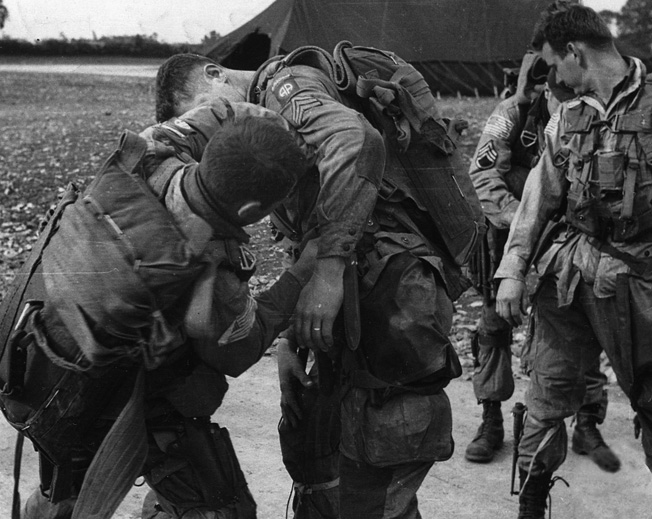
Thirty-seven-year-old Gavin and his men had taken off from Cottesmore in the English Midlands a few hours before. Gavin knew that his troopers had only eight and a half minutes in which to jump in order to land in the correct drop zones. After ordering the men to stand and hook up their parachutes, Gavin glanced out of the window again and saw the thickest fog he had ever seen. He could see nothing—not even the next plane.
The fuselage door was opened, and suddenly the fog disappeared. “It was gone just as quickly as it had appeared,” Gavin reported later. “I could see Ste. Mere-Eglise down there. I think it was the most dramatic moment of my life. Everything had depended on us jumping at just the right time.” A few seconds later, he shouted, “Let’s go!” He tumbled out of the door at an altitude of 600 feet, and stick after stick of paratroopers leaped out into the darkness.
60 Percent of All Equipment Was Lost
Men of the 101st Division dropped into flooded meadows near Utah Beach after their planes slipped past German coastal batteries without being fired on. But the 82nd ran into increasing fire, and many inexperienced pilots veered off course during the final run in to the drop zones. Many troopers jumped several minutes too late into a sky filled with tracers and small-arms fire. They were critically scattered.
Ridgway’s division fared much worse than Taylor’s. Some men landed as much as 25 miles from Ste. Mere-Eglise, and many of the gliders plowed into hedgerows and buildings, pancaked into rivers, or settled helplessly into the Merderet River marshes. Casualties were high, and 60 percent of all equipment—including mortars, radios, and ammunition—was lost. Hundreds of gear-laden troopers fell into treacherous swamps, and many drowned in less than two feet of water. Only one unit of the 82nd, the 505th Parachute Infantry Regiment, jumped into its assigned zone.
Meanwhile, scattered groups of troopers struggled out of the marshes, using toy mechanical crickets to recognize each other in the darkness and trying to regroup and organize themselves. General Ridgway found himself alone, pistol in hand, in a field. At this time, Gavin was miles away in the Merderet River swamps. He had dropped into a pasture north of La Fiere, far from his assigned drop zone. But “Slim Jim” Gavin wasted no time, for he knew that by dawn his men would be under heavy attack when the German defenders realized what was happening.
By 4 a.m., he had managed to round up a small group of stray troopers. He stood knee deep in cold water while the men tried unsuccessfully to salvage an antitank gun from a half-submerged Waco cargo glider. Gavin did not know where he was until his aide, Lieutenant Hugo Olson, reported that there was a railroad embankment nearby. The general knew that the Cherbourg-Carentan line passed through the Merderet valley. He felt better.
He led his band, which now numbered about 200, southward along the embankment to the vicinity of La Fiere, where he found another 300 men from various regiments milling about. Gavin split the force. He kept half at La Fiere, to seize the bridge there, and sent the other men to Chef-du-Pont to capture another bridge.
As the sun rose on June 6, Gavin found himself walking back and forth between La Fiere and Chef-du-Pont, organizing and encouraging his troops as they fought to secure the two vital Merderet River spans. The Chef-du-Pont bridge was seized after a bitter fight, but it would take two days to capture the La Fiere span from the tenacious Germans.
Very High Casualties in the First 48 Hours
Meanwhile, Gavin’s men dug in around the Merderet and Douve crossings and held the rear of Utah Beach, where the 4th Infantry Division was landing. Gavin, never without his M-1 rifle, was close to his men at all times. They loved and respected him because he was a first-class soldier and was concerned with their welfare. They called him “Grandma” because his first question to a GI was often: “When was the last time you had a hot meal, son?” His rapport with enlisted men was unique among generals.
“He was the kind of man who never had to raise his voice,” said Jack Norton, who served under him for nine years. “He led by example.” Another trooper, Sergeant William Tucker, reported, “Gavin was always up front prowling around … Wherever the battle was, wherever the troops needed to see and hear him, there was Gavin.” Ted Morgan, a medical corpsman and later selectman in Edgartown, Massachusetts, would recall Gavin administering first aid to a badly injured staff sergeant during the Battle of the Bulge and bandaging him up.
He seemed to be fearless. Bill Walton of Time Magazine reported, “I remember seeing the two of them (Ridgway and Gavin) walking down a road in Normandy with all sorts of stuff flying around. I was creeping along down in the ditch by the side of the road, and when they saw me, they yelled simultaneously, ‘Get up here and walk like a man!’ And I did.” Gavin was a soldier’s soldier. One division veteran recalled, “He could jump higher, shout louder, spit farther, and fight harder than any man I ever saw.”
The All-Americans fought hard on a minimum of rest and food during those early days in Normandy. By the morning of June 8, they had gained almost full control of their objective area and were eliminating pockets of resistance. Casualties were high; on D-Day alone, the 82nd lost 1,259 men killed, wounded, or missing.
After the capture of the La Fiere bridge and the successful drop of the 325th Glider Infantry Regiment, the 82nd Airborne began a drive to cut off the Cotentin Peninsula. The troopers captured Saint Sauveur-le-Vicomte and advanced to La Haye du Puits near the western coast of the peninsula. Casualties continued to mount; 57 percent of the division’s men were killed or wounded in 33 days of fighting without relief.
In the second week of July 1944, with the Normandy beachhead secured and the strategic port of Cherbourg in American hands, the exhausted troopers of the two airborne divisions boarded LSTs for England. The 82nd had 5,245 of its men listed as casualties. In Southampton, brass bands greeted the All-Americans, and in the Midland towns around their base, they were treated to many rounds of drinks in the inns.
General Gavin was awarded a cluster to his Distinguished Service Cross for “extraordinary heroism” while personally reorganizing a battalion and directing an attack on the town of Le Motey on June 9. That August, when General Ridgway was given command of the 18th Airborne Corps, Gavin moved up to head the 82nd Airborne Division. At 37, he was the youngest divisional commander in the Army since the Civil War.
From Poverty to West Point
The man who was proving to be one of the leading airborne tacticians and combat officers of World War II came from humble beginnings. Born in Brooklyn, New York, on March 22, 1907, Gavin was orphaned before he was two years old. He was adopted by Martin and Mary (Tearle) Gavin, and brought up in Mount Carmel, Pennsylvania. His new father was a semi-literate immigrant coal miner, and the family lived in poverty. “My parents were kind people; they could hardly read or write,” Gavin recalled. The boy attended parochial schools and did odd jobs to help support his parents—delivering newspapers, picking coal, and assisting in a barber shop.
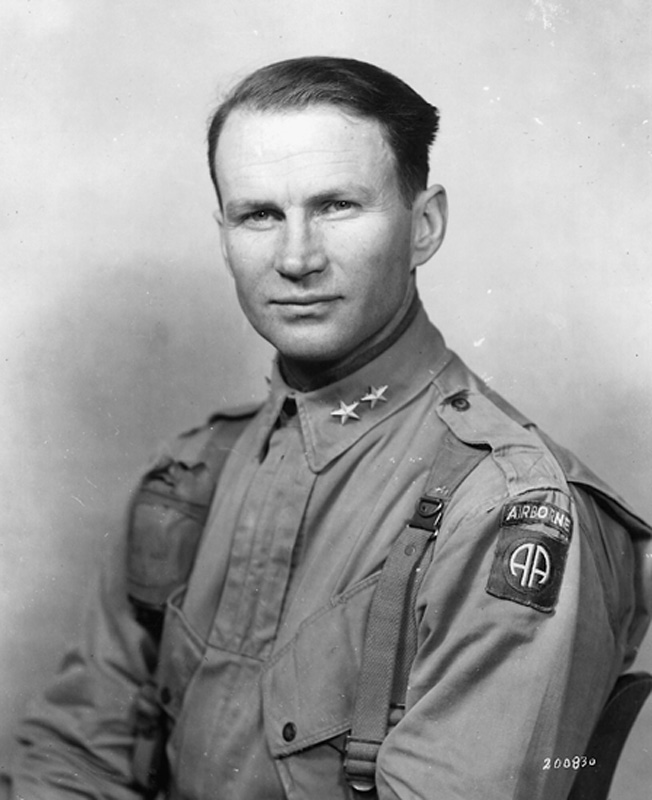
Young Jim developed a thirst for knowledge, with a particular interest in military affairs. He wrote an outline of the Civil War for his class and read every book he could get his hands on. There was then no library in the town, so he had to content himself with reading the books in the store where he picked up his newspapers. At the age of 15, Jim left school to become a clerk in a shoe store and later managed a filling station. But by the time he was 17, he was restless.
He was frustrated by his lack of education and felt that he had exhausted the few opportunities that Mount Carmel offered. Learning that he could further his education in the Army, he left home a week after his 17th birthday in 1924 and enlisted in the Coast Artillery. He served in the 16th and 2nd Regiments and rose to corporal in 15 months.
Assigned to the Panama Canal Zone, Jim was delighted to find a library at his new post. He made full use of it, teaching himself algebra and other subjects. An old sergeant persuaded him to take a competitive examination for admission to the U.S. Military Academy. Gavin had only an eighth-grade education, but he was ambitious and determined. He laboriously mastered the textbooks page by page, managed to pass the tests, and was accepted as a cadet at West Point on June 30, 1925.
With his humble background and lack of education, he realized that he was an oddball in the Long Gray Line. “When they got me, they got a case they could put in a laboratory and watch,” he said later. “I was a perfect experimental subject. Well, they stimulated me to study my goddamn head off. I began to read extensively.” To pass his first-semester “writs,” the young man had to get up at 4:30 AM and study in the barracks latrines. He persevered, squeaking through his first year and gradually catching up with his classmates. He finished in the top third of his class, ranking 185th in a class of 299. Gavin graduated on June 13, 1929, and was commissioned in the infantry.
“The Eyes of the World Are Upon You”
After taking three months of flight training at the Army Air Corps Primary Flying School at Brooks Field in Texas, Lieutenant Gavin joined the 25th Infantry Regiment at Camp Harry S. Jones in Arizona. Then followed tours of duty with the Infantry School at Fort Benning, Georgia (graduating in 1933), and with infantry regiments in Oklahoma, the Philippines, and Washington State. He was promoted to first lieutenant in 1934 and captain in 1939.
In August 1940, Gavin returned to West Point as an instructor in tactics. He studied the European war closely, particularly airborne operations, and saw their almost limitless possibilities. He applied for a transfer to a new parachute battalion at Fort Benning, but he was one of the best young instructors at the academy and the superintendent disapproved it. But Gavin persisted, cajoling a friend at the War Department to pull some strings and find a replacement for him at West Point. So, in August 1941, the tenacious young officer left for the new Army Parachute School at Fort Benning.
He completed jump training and displayed considerable ability in organizing and training units in airborne infantry tactics. Promoted to major and then lieutenant colonel, he attended the Command and General Staff School at Fort Leavenworth, Kansas, and eventually took command of the 505th Parachute Infantry Regiment at Fort Benning in the summer of 1942. He welded the regiment into an efficient unit. Gavin devoted himself fully to airborne tactics, though he would often admit to his men, “Jumping is a poor means of transportation from the plane to the ground.” The regiment was transferred to Fort Bragg, North Carolina, where it became part of the new 82nd Airborne Division. Gavin became a temporary colonel in September 1942, and the following April the division was sent overseas.
After a 12-day voyage, Maj. Gen. Matthew B. Ridgway’s division docked in Casablanca on May 10, 1943. It moved overland by train to Oujda in French Morocco, where pup tents were set up and more training started. The troopers chafed and itched for action. Ridgway told them, “You’ve got to be tough because the German you meet will be goddamned tough!”
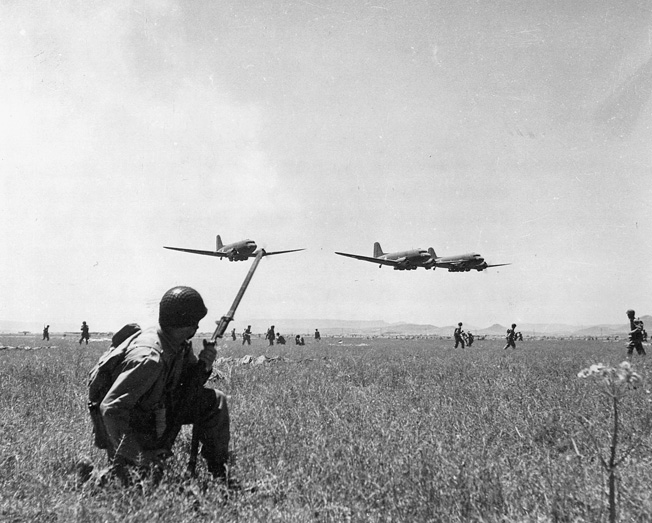
Ridgway told Gavin that the 82nd and the British 1st Airborne Division were to spearhead Operation Husky, the Allied invasion of Sicily, that July. It would be the largest two-nation sea and air assault in history and would inflict the first sledgehammer blow on Nazi-held Europe. There were not enough C-47s available to drop the entire division, so the initial assault would be made by Gavin’s 505th Parachute Infantry Regiment, reinforced by a battalion of Colonel Reuben H. Tucker’s 504th Parachute Infantry Regiment. They would be the first U.S. troops to invade Europe—in the first American airborne operation on a regimental scale, and the first mass parachute drop at night.
More training followed in bivouac at Kairouan, Tunisia. After General Dwight D. Eisenhower, the Allied ground commander, and his Algiers staff finally approved the plan for Operation Husky, Colonel Gavin distributed a letter on July 9 to his troopers. It read, “Tonight you embark upon a combat mission for which our people and the free people of the world have been waiting for two years…. The eyes of the world are upon you. The hopes and prayers of every American go with you….”
The airborne drops would precede an amphibious invasion by General Bernard L. Montgomery’s British Eighth Army and Lt. Gen. George S. Patton Jr.’s U.S. Seventh Army. The paratroopers would block enemy counterattacks against the beaches and seize key bridges to block Axis reinforcements. Gavin’s force was to drop north and northeast of the port of Gela and capture strategic high ground at Piano Lupo, while the British “Red Devils” would land in gliders and take the Ponte Grande bridge to allow the Eighth Army to attack Syracuse.
The Race to Gela
The Allied armada steamed toward the rocky island of Sicily. Daylight was fading on July 9 as Brigadier P.H.W. Hicks’s British paratroopers clambered aboard 144 Horsa and Waco gliders at airfields around Kairouan. C-47s and Royal Air Force Albemarle and Halifax bombers towed them aloft and droned toward Sicily. Two hours later, Gavin’s force boarded 266 C-47s and took off into the night.
The inexperienced pilots ran into high winds shortly after takeoff, and the transports were blown off course as heavy weather assaulted the armada below. Many of the C-47s missed signal beacons on Malta, two gave up and returned to North Africa, and one plane crashed into the Mediterranean. Instead of approaching in orderly V-formations, many of the planes carrying Gavin’s men neared Sicily from every direction.
The British were faring worse. Approaching Cape Passero, the British formation was hit by enemy antiaircraft fire and tracers, and confused pilots released their gliders prematurely. Sixty-seven gliders plunged into the sea with a loss of 200 men, and only five gliders managed to reach Cape Passero. Less than 100 Red Devils reached the Ponte Grande bridge, but they held it until British infantry arrived.
Meanwhile, riding in a C-47 that was off course, Colonel Gavin stood in the open door and looked for a landmark. There was land beneath, but was it Sicily? The green light flashed, and Gavin leaped into the darkness. Immediately behind him came bearded John H. Thompson of the Chicago Tribune.
When he hit the ground, Gavin was still not sure that he had landed in Sicily. Twenty troopers landed near him, but the officer did not know that the airborne assault had been chaotic and that U.S. paratroopers were being scattered all over southeastern Sicily. Most of his men were floating to Earth near Noto, 60 miles to the east in the British sector—far from their drop zone near Gela.
Gavin’s planeload had come down near the town of Vittoria, 20 miles east of Gela and in the hills overlooking the beaches where the U.S. 45th “Thunderbird” Division was to land. Four hours after the drop, Gavin still had only 20 men under his command. He had left Tunisia with 3,405. As dawn approached, he felt angry and impatient.
Small groups of paratroopers were now roaming across the rocky hills, cutting telephone wires and skirmishing with enemy patrols. Shortly after 3 AM, thousands of Allied infantrymen began wading ashore from landing craft, meeting fierce but brief resistance.
Gavin and his little group marched toward the sound of distant gunfire, hoping to find the rest of the combat team. But they still did not know what island they had landed on—Sicily, Corsica, or Sardinia? Early on the morning of July 11, Gavin found out when he stumbled onto an outpost of the Thunderbirds. He then led his group to Vittoria, where he grabbed a jeep and driver and raced toward Gela as dawn was breaking. Along the way, Gavin rounded up 250 wandering men of his combat team. He felt better now.
Meanwhile, General Paul Conrath’s elite Hermann Göring Panzer Division was grinding toward Gela to smash the 45th Infantry Division. Along the road to Gela, Gavin heard heavy small-arms fire erupting half a mile away from the Biazza Ridge, where the Germans were dug in. A force of 750 panzergrenadiers, a company of Tiger tanks, and an armored artillery battalion, the eastern column of the Göring Division, headed over the ridge toward Gavin and his troopers. He did not know it, but Gavin and his little force were about to fight one of the critical actions of the Sicily invasion.
Holding On to Biazza Ridge
“Jumping Jim” Gavin commanded a motley group of paratroopers, engineers, cooks, clerks, orderlies, and riggers. He had no field guns, antitank guns, or tanks, and he knew he would be greatly outnumbered. But he decided to fight; he had waited long enough for action.
He formed his men into a skirmish line, with himself in the center, and waved his arm. The Germans on the ridge opened up with automatic weapons and rifle fire, killing three of Gavin’s scouts. The troopers hit the dirt, firing. More men were cut down, but Gavin and his soldiers pressed forward. The Americans fired furiously and yelled wildly. Despite increasing casualties, Colonel Gavin’s little force expanded. Hearing the clatter and whine of gunfire, other GIs in the vicinity rushed to Biazza Ridge. They included part of a company of the 180th Infantry Regiment, a lost platoon of the 45th Division, knots of paratroopers, and even a couple of Navy ensigns who had parachuted in to coordinate naval gun support.
With their firepower increased, Gavin led his men up the ridge, and the Germans withdrew. By afternoon, the Americans were atop the high ground and enjoying a brief rest. But the fight was not over. As the GIs took over the enemy foxholes, German artillery and mortar fire began to rock the ridge. The Americans tried feverishly to deepen their holes. Gavin, using a shallow slit trench as his command post, then decided to follow a basic rule he had learned at West Point: when the enemy is on the run, pursue him. He ordered his men into action again.
The troopers moved down the ridge and along a road toward the retreating Germans. Then they heard a fearful sound—the rumble of diesel engines and the clank of steel treads. The Tiger tanks were coming to crush the All-Americans. Rounding a bend in the dusty road, Gavin’s men suddenly were confronted by half a dozen big Mark VI Tiger tanks. The paratroopers had only ineffective 2.36-inch bazookas with which to defend themselves against armor. Fired at pointblank range, the rockets bounced harmlessly off the tanks. One GI was crushed under a Tiger’s treads, and machine gunners leaped from the tanks and overran the bazooka teams before they could reload. The Americans cursed and raged.
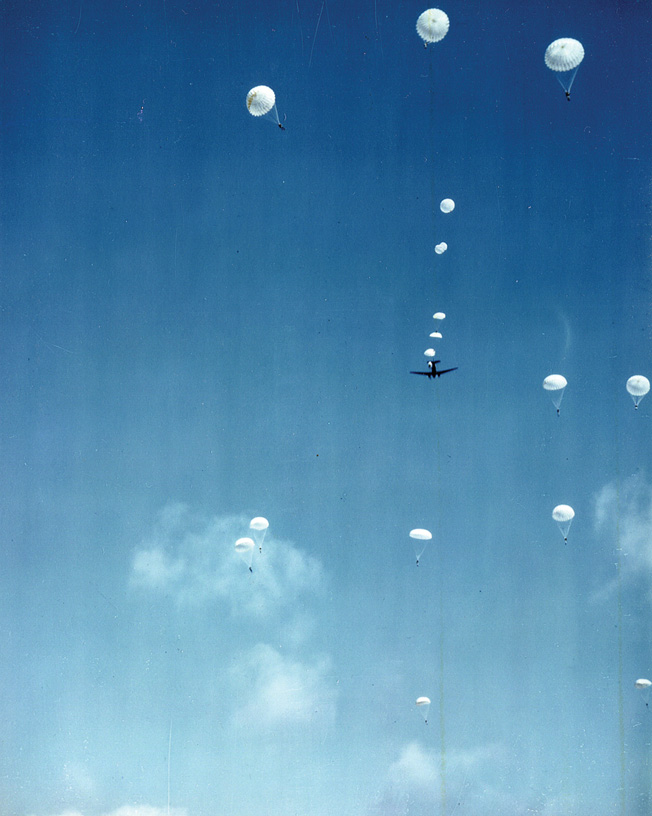
Gavin was alarmed, and the battle raged on. But the American firepower increased slightly. A couple of 81mm mortars began lobbing shells at the Germans, and airborne artillerymen rushed two 75mm pack howitzers into position on the ridge and fired directly at the enemy tanks. Gavin dashed back and forth fearlessly, shouting encouragement to his men. “We’re staying on this goddamn ridge, no matter what happens!” he shouted.
The Tigers rolled on as the howitzers blasted them and troopers edged up to them and fired bazooka rockets into their vulnerable gasoline tanks and ammunition racks. One tank turned and withdrew, and three others were demolished and their crews killed. Gavin lay on the ground, firing away with his rifle. The fight grew more intense as more German tanks were deployed. The Germans were massing for a major assault to retake the ridge.
As mortar rounds kicked up dust clouds around him, Gavin decided that he needed support, so he sent an officer back to the command post of Maj. Gen. Troy Middleton, commander of the Thunderbirds. The troopers fought on as the Germans pushed to within a few hundred yards of Gavin’s command post. Then came the heartening sound of American 155mm shells whooshing overhead, and the ground shook as the rounds exploded among the enemy infantry and tanks. The enemy force wavered and then started pulling back. The shelling ceased, and Biazza Ridge was quiet until Gavin and his weary men were alarmed to hear the sound of heavy engines behind them. But it was half a dozen Sherman tanks and several half-tracks hauling antitank guns; more help had arrived from the 45th Division. Cheers went up.
Salvoes blasted the German positions, and the troopers moved forward through mortar and machine-gun fire to close with the enemy. The American 155s opened up again, and the Germans withdrew from the battlefield, leaving behind their dead and wounded and tons of equipment and supplies.
Aftermath of the Battle of Gela
Colonel Gavin was proud of his untried paratroopers who had bested a battle group of the Hermann Göring Division and blocked a threat to the landing beaches.
However, the cost had been high. Many of the troopers, including Gavin himself, had suffered wounds, and 50 Americans were dead. That night, the fallen were buried on the ridge as heads bowed in prayer and Gavin wept.
The exhausted Colonel Gavin fell asleep in a shallow foxhole under a clump of olive trees. He was awakened early on the morning of July 12 by the hot sun on his face. One of his legs was stiff and sore, and his shinbone was red and swollen. He had fought for hours and then slept without realizing that he had been wounded by shrapnel. Fearing an infection and not wanting to be removed from the front, he went to an aid station and had sulfa powder sprinkled on his wound.
Early the next morning, Gavin rode a jeep to the high ground at Piano Lupo. After inspecting the barren terrain covered with bloated bodies where other All-American troopers had blocked the western column of the German division, he rode on to Gela. There was a lump in his throat. On a hill outside Gela stood General Patton, resplendent in his trademark starred helmet, cavalry jodhpurs, jackboots, and ivory-handled pistols.
As Gavin approached, rifle in hand, “Old Blood and Guts” grinned and said in his high-pitched voice, “Hello, Gavin. You and your men did one hell of a goddamn great job!” Then he offered the young colonel a drink from a large whiskey flask.
Although the Allied military command was critical of the results of the airborne phase of the Sicily invasion, enemy officers were impressed. Field Marshal Albert Kesselring, commander of the German forces in the Mediterranean Theater, stated later, “The paratroopers effected an extraordinary delay in the movement of our troops, and caused large losses.” General Kurt Student, founder and commander of the German airborne forces, said, “It is my opinion that if it had not been for the Allied airborne forces blocking the Hermann Göring Armored Division from reaching the beachhead, that division would have driven the initial seaborne forces back into the sea.”
Landing in Mainland Italy
Led by the British Eighth Army, the Allies next invaded the Italian mainland. At the Salerno beachhead, the British and Americans encountered stiff opposition. Despite all the power of artillery and naval gunfire brought against them after the September 9, 1943, landings there, the Germans managed to drive a two-mile wedge in the beachhead line and advance to within three miles of the water’s edge. By September 13, the situation was “touch and go” at Salerno, according to General Mark W. Clark, commander of the U.S. Fifth Army. He sent an urgent message to Ridgway in Sicily for reinforcements.
Ridgway wasted no time. That night, men of Colonel Reuben Tucker’s 504th Parachute Infantry Regiment jumped into the beachhead and were in the front lines before sunrise on September 14. That night, 120 transports dropped Colonel Gavin and his 505th Regiment into the beachhead, and they, too, were positioned by dawn the next day. Allied morale at Salerno rose with the arrival of the airborne units, and by the afternoon of September 15, the enemy had been beaten to a standstill. A German withdrawal all along the Allied front began on September 18.
The British and American forces began to punch their way out of the beachhead on September 23. Gavin’s regiment spearheaded the drive northward, past the ancient ruins of Pompeii and around Mount Vesuvius. Early on September 30, 1943, British armor and infantry entered the outskirts of Naples, the first major European city to be liberated in the war. While elements of the 82nd Division remained in Naples, the Allied main force pushed on northward to the Volturno River, where the enemy halted and dug in.
Gavin, now 36 years old, received his first star as brigadier general (temporary) and was promoted to assistant commander of the division that October. In November, he was ordered back to England to assist General Eisenhower, now commander of the Allied expeditionary forces, as the chief American airborne planner for the forthcoming invasion of Northern Europe. The 82nd set up base near Leicester for rest and training before the Normandy invasion.
Operation Market-Garden
After taking command of the division in August 1944, Gavin was anxious to get back into combat. He would not have to wait long. The All-Americans were assigned a role in Operation Market-Garden, Montgomery’s bold, hastily planned airborne invasion of Holland—a lightning stroke that he believed would end the war in 1944. The plan was to cut off major German forces in Holland that were blocking the Allies from using the strategic Belgian port of Antwerp, to outflank the Siegfried Line, and to place sizable British forces across the lower Rhine at Arnhem, Holland, where they would be positioned for a quick thrust into the Ruhr Valley, the German industrial heartland.
Lieutenant General Lewis H. Brereton’s Allied 1st Airborne Army was to lay a 50-mile carpet of parachute and glider troops from Eindhoven northward to Arnhem. After the troopers had seized key bridges and towns, Lt. Gen. Brian Horrocks’s British 30th Corps, spearheaded by the crack Guards Armored Division, would roll along the carpet to the Zuider Zee, loosing the full weight of British might on the Ruhr.
The British 1st Airborne Division was assigned to capture the big Rhine bridge at Arnhem, General Maxwell D. Taylor’s 101st Airborne Division would capture a 15-mile stretch of the main north-south highway between Eindhoven and Grave, and Gavin’s division would drop along a 10-mile stretch of the road in the middle of the carpet, seizing the Waal River bridge at Nijmegen, the Maas River span at Grave, the Maas-Waal Canal bridges, and the Groesbeek Heights southeast of Nijmegen.
Monty’s plan was a bold one, but it was fraught with potential problems. The Arnhem bridge was 64 miles behind the German lines, there was only one main two-lane highway, and the rest of the terrain—swampy and crisscrossed by canals—was unsuitable for an advance by armor. Several British and U.S. commanders voiced doubts about the operation. But Montgomery, the prickly, cocky victor of El Alamein, was confident and would brook no doubts. Dutch underground reports about panzers gathered at Arnhem were downplayed.
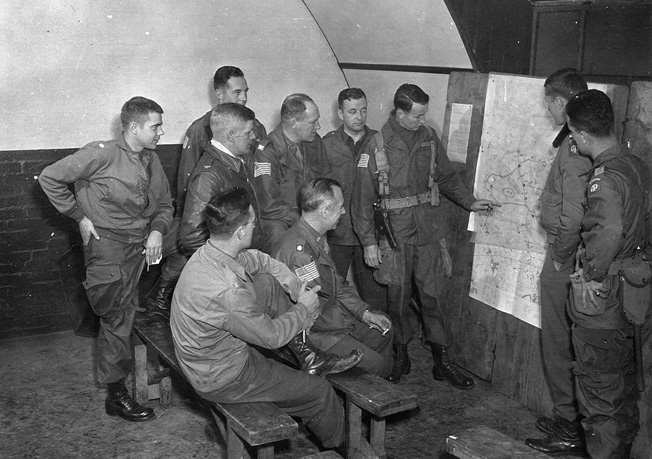
Shortly after 10 AM on Sunday, September 17, 1944, the sunny skies over southern England thundered as 1,545 transport planes and 478 gliders lifted from two dozen airfields and headed for Holland. It was the greatest armada of troop-carrying planes ever assembled for a single operation. The planes streamed along two parallel routes over the coasts of Holland and Belgium. The British Red Devils took the northern route, followed by Gavin’s 82nd, and the 101st followed the southern route. Antiaircraft and small-arms fire peppered the armada, and several planes were hit. But the transports and gliders flew steadily on.
At 1:30 that afternoon, the airborne army began dropping behind the German lines. As they watched the parachutes drifting down and the Horsa and Waco gliders veering in for crash landings, Dutch people returning from church services waved and cheered. After more than four years under the Nazi yoke, they saw their moment of deliverance at hand. The parachute and glider troops were dropped accurately, despite the enemy gunfire, and many soldiers said it was the most precise drop they had ever made. But the cost was high that day, with 68 transports, gliders, and escorting fighters going down in flames.
The German occupation forces were caught by surprise. At his headquarters in the village of Vaught, General Student, commander of the German 1st Parachute Army, stood on a balcony and was awed by “an endless stream of enemy transport and cargo planes as far as the eye could see.” Landing in a great cluster, Taylor’s “Screaming Eagles” swiftly organized themselves on landing and began seizing bridges at Saint Oedenrode, Zon, Veghel, and Eindhoven.
Halted at Nijmegen Bridge
As in the air drops at Sicily, Salerno, and Normandy, General Gavin rode in the lead C-47 of the formation carrying his All-Americans into action. The green jump light flashed, and he stepped coolly out into space. Throughout the 25-mile airhead, the division’s infantry and light artillery elements dropped with pinpoint accuracy. Landing at both ends of the big Maas River bridge near Grave, Colonel Tucker’s 504th Regiment was able to capture it swiftly. This was the most significant accomplishment of the day by an airborne unit.
Meanwhile, at 2:35 that afternoon, the great armor and infantry column of General Horrocks’s 30th Corps began its 64-mile push up the backbone of Holland along the strategic route the paratroopers were fighting to hold open. At the northern end of the carpet, Maj. Gen. Robert E. Urquhart’s Red Devils were already fighting desperately against heavy odds—the 9th and 10th Panzer Divisions positioned in the Arnhem area. One British battalion battled to hold the northern end of the critical Arnhem road bridge, and the rest of Urquhart’s division, outgunned, outnumbered, and hampered by malfunctioning radio sets, struggled to hold its drop zone near Oosterbeek.
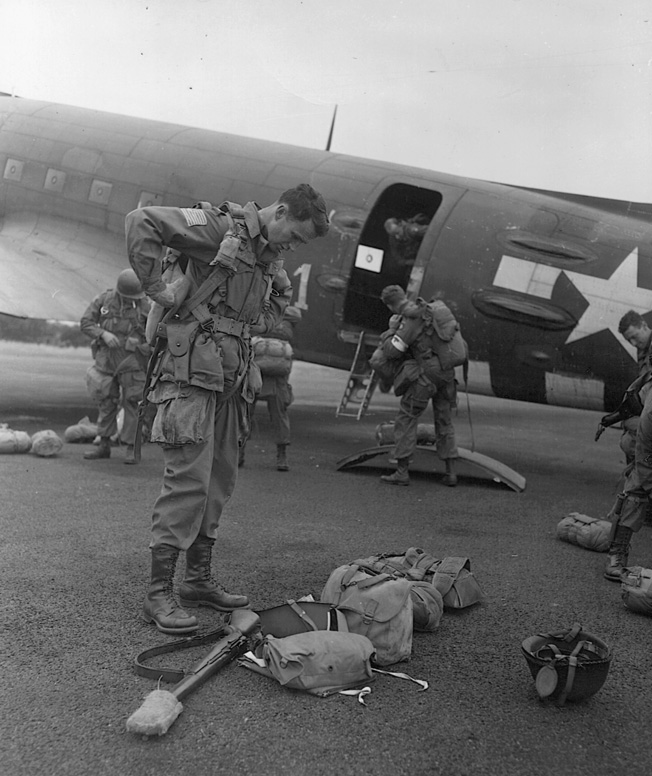
Gavin, who had fractured two vertebrae in landing near Groesbeek but was not aware of it until later, rounded up his men and led them in capturing the town of Groesbeek. The troopers then set up defensive positions along the Groesbeek Heights facing the Reichswald Forest. That night, Gavin sent two companies into Nijmegen, where, aided by a Dutch guide, they made their way to the main post office where the Germans had set up mechanisms for detonating the big Nijmegen highway bridge. The troopers cut the wires but then found themselves battling the Germans defending the span. The enemy retained its grip on the bridge for another five days.
By the end of September 17, it was evident that serious problems were already threatening the success of Operation Market-Garden. The Screaming Eagles had been unable to capture Eindhoven, Gavin’s men had been halted short of the Nijmegen bridge, and the British at Arnhem were out on a limb.
“I Have Never Seen a More Gallant Action”
On September 18, the three airborne divisions endeavored to improve their tactical situations and to secure landing zones for glider reinforcements. Maj. Gen. Stanislaw Sosabowski’s Polish 1st Parachute Brigade was held in reserve and then was delayed by fog in England.
After a fierce struggle against German artillery, tanks of the British Guards Armored Division clanked into Eindhoven that Monday evening and linked up with the 101st Airborne Division. The armor rolled on and joined Gavin’s troopers at Grave the following morning. Meanwhile, the 82nd held tightly to the Groesbeek Heights and continued to fight for the Nijmegen bridge. That night, a Dutch message from Arnhem reported that the panzers were getting the best of the British paratroopers.
General Horrocks reached Gavin’s command post on the afternoon of September 19. The American general briefed him on a plan for seizing the Nijmegen bridge so that the British armor could continue northward to Arnhem. That afternoon, the 2nd Battalion of the 505th Regiment, supported by British infantry and tanks, attacked the southern end of the bridge, but the enemy loosed a deadly hail of crossfire and held on.
Next, Gavin proposed to send some of his men across the Waal River in small boats to try and seize the northern end of the bridge. But there were no such boats in the area. Horrocks solved the problem by offering the use of 33 canvas and wood engineer assault boats, but they could not be brought up until the following day. The crossing would be made by the 3rd Battalion of the 504th Parachute Infantry Regiment led by Major Julian A. Cook. It would be a hazardous crossing because the Waal was 400 yards wide and had a fast current.
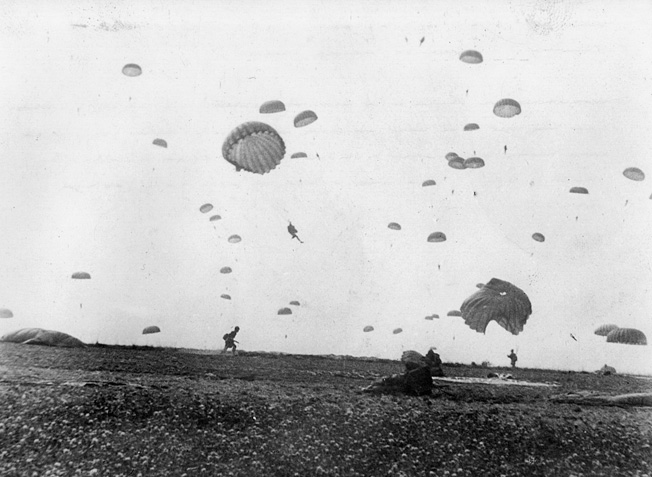
On September 20, the battalion made ready to cross supported by mortars and artillery of the 82nd Division and 30 tanks of the Irish Guards Brigade lined up on the riverbank. Finally, after frustrating delays caused by German artillery and traffic jams on the single north-south highway, the assault boats arrived on 30th Corps trucks. They were hastily assembled, and around 3 PM, Major Cook’s men clambered into the flimsy craft and pushed into the river. A deafening British-American barrage hammered the far shore as Cook’s troopers paddled across, using their rifle butts as oars. Enemy small-arms fire raked them, and men were killed and wounded. The Americans used their helmets to bail out water and stuffed handkerchiefs into bullet holes in the boats.
The troopers paddled on into the German fire, with Major Cook alternately shouting encouragement and breathlessly repeating, “Hail Mary, full of grace, blessed is the fruit of thy womb, Jesus …” His men struggled against the current and were exposed when the wind shifted and blew away a protective smokescreen, but somehow the 26 boats that had started out made it across. However, only 13 of them were fit for a return trip to pick up the next assault wave.
Major Cook and the survivors of the crossing scrambled ashore, formed small disorganized groups, and dashed across open ground to gain a toehold on the northern bank. With rifles, bayonets, and hand grenades, they fought their way to the bridge. Lt. Gen. Frederick “Boy” Browning, British deputy commander of the Allied 1st Airborne Army, who had jumped into Holland with Gavin, told General Horrocks, “I have never seen a more gallant action.”
Eventually, after fierce fighting, the Nijmegen bridge was in Allied hands that evening. Tanks of the British Grenadier Guards rumbled across the span, but they would be unable to get through to Arnhem, where Urquhart’s Red Devils—equipped only with small arms and running out of ammunition, food, and medical supplies— were being overwhelmed by the panzers. After the Nijmegen action, Gavin was visited by Lt. Gen. Miles C. Dempsey, the skilled, unassuming commander of the British Second Army, who told him, “I’m proud to meet the commanding general of the greatest division in the world today.”
By September 24, Montgomery and Brereton realized that the British paratroopers at Arnhem were being annihilated, so their withdrawal was ordered. Of the 10,005 Red Devils there, 7,578 were casualties. The 101st Airborne Division lost 2,118 men in Operation Market-Garden, and Gavin’s division suffered 1,432 casualties. The operation had failed, and Gavin was angered when the British press depicted Arnhem as something more than a glorious defeat.
The 82nd Airborne at the Bulge
After some more ground fighting in Holland while the British and Canadian Armies struggled to clear the approaches to Antwerp, the two American airborne divisions were trucked to camps near Rheims, France, for well-earned rests. Gavin was promoted to major general that October and was awarded the Silver Star for gallantry. He also received British, Dutch, French, Belgian, and Russian decorations, while his All-Americans were awarded a Presidential Unit Citation, the French and Belgian Fourragere, and the Dutch Order of Willem.
General Gavin was dining with his staff on the evening of December 17, 1944, when the telephone shrilled. The Germans had broken through in the Ardennes Forest the previous day, and the American situation was critical. The 18th Airborne Corps was alerted to move to the front within 24 hours after daylight the following day. Characteristically, Gavin moved swiftly. He sent word to the 101st Division, alerted his troop units, and briefed the commanders. Another telephone call informed Gavin that the crisis in the bulge was now more urgent, and the airborne corps was ordered to move immediately toward the strategic road junction town of Bastogne in Belgium.
Acting as temporary commander of the 18th Airborne Corps in the absence of General Ridgway, who was in England, Gavin issued orders for the All-Americans to move by truck toward Bastogne an hour after daylight on December 18, with the Screaming Eagles following in the afternoon. While his troopers drew weapons, rations, and extra ammunition, Gavin rushed to General Courtney Hodges’s U.S. First Army headquarters in Spa, Belgium. The First Army was bearing the brunt of the German offensive. Hodges assigned the 82nd Division to V Corps, defending terrain north of Bastogne and along the northern shoulder of the enemy penetration. The division would set up defensive positions around Werbomont, directly in the path of enemy units then attempting to encircle St. Vith, while the Screaming Eagles were ordered to defend Bastogne.
Gavin met leading elements of his division when they started rolling into Werbomont on the evening of December 18. Roadblocks were set up, and Gavin established his command post in a farmhouse in the little crossroads village. Ridgway arrived that night as the truck columns continued to rumble in. As the enemy panzer and infantry groups pushed deeper into Belgium, Ridgway took over operational control of the 3rd Armored and 30th Infantry Divisions, conducting a brilliant defensive battle along the northern shoulder of the bulge.
At daylight on December 19, Gavin learned that Field Marshal Gerd von Rundstedt’s panzers had cut the road leading southward from Werbomont to Bastogne. The situation was serious. The outnumbered American units at St.-Vith and Bastogne held firm, though both towns were surrounded by December 20. The Germans were forced to split their forces as the Americans fought desperately, and the enemy offensive weakened.
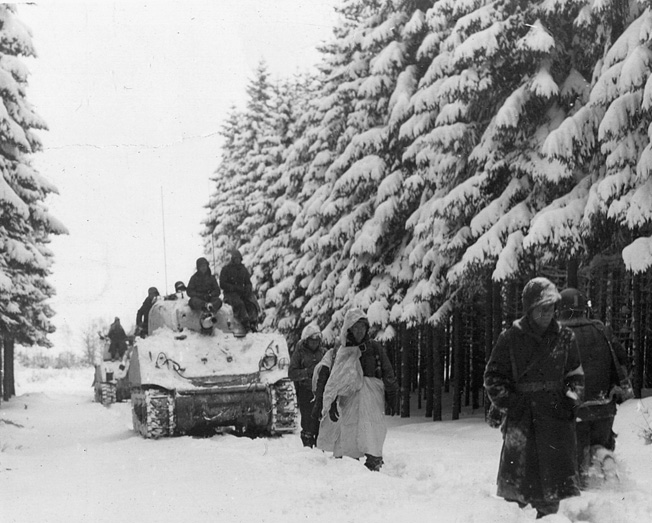
While the Screaming Eagles under Brig. Gen. Anthony C. McAuliffe, deputy commander, heroically held Bastogne, Gavin’s men fought equally hard to the north. After the encircled U.S. armored forces were pulled back from St. Vith, the weight of the enemy attack fell upon units of the 82nd Airborne Division. The 504th Parachute and 325th Glider Infantry Regiments fought stubbornly against the Germans who had overrun St. Vith, and refused to yield much ground. Colonel Tucker’s 504th Regiment was awarded its second Presidential Unit Citation for gallantry—the first such citation won by an American unit in the Battle of the Bulge.
When the enemy threatened to break through at an isolated key road junction at the village of Baraque de Fraiture, Gavin rushed in a company of glider troops to reinforce a motley force of tankers and infantrymen there. He also dispatched a glider infantry battalion to the town of Fraiture, a mile northeast of the crossroads. The two units arrived on the morning of December 22, just in time to confront the first contingent of the 2nd SS Panzer Division. Heavily outnumbered, the GIs withstood artillery barrages and assaults by tanks and a panzergrenadier regiment. The Americans stood their ground for more than an hour but were overwhelmed. Only 44 of the 116 glider troops sent to the junction escaped; the rest were killed or captured.
After General Montgomery had been ordered by Eisenhower to “tidy” the Allied lines in the northern bulge, the 82nd Airborne withdrew to a stronger, more consolidated position a few miles to the north. Gavin’s troopers groused about retreating, but their morale was still high. They blew up bridges across the Salm River, planted mines, and strung wire. By Christmas morning, all was ready. The enemy counterattack had run out of steam in the snow-clad, fog-shrouded Ardennes, and on December 26, besieged Bastogne was relieved by Sherman tanks of Lt. Col. Creighton W. Abrams’s 37th Tank Battalion of the 4th Armored Division.
The following day, Von Rundstedt threw the 9th SS Panzer and 62nd Volksgrenadier Divisions against Gavin’s All-Americans in a last desperate attempt to breach the northern shoulder of the Allied defense line. Howling and firing their weapons as they charged, the German infantry attacked the paratroopers east of the village of Manhay. One battalion was overrun, but the rest of the Americans held their ground. When they saw the big Tiger and Panther tanks rolling toward them, the GIs ducked down in their foxholes and rallied after they had passed. Gavin committed a reserve company, the Americans fought fiercely, and the Germans were forced back to their own lines. Some captured enemy soldiers said they had never before seen Americans fight so tenaciously.
On January 3, 1945, the Allied forces on the northern shoulder launched an offensive to reduce the German bulge. Gavin’s men were in the thick of it, fighting aggressively though hampered by deep snowdrifts and bitter weather. The 82nd and the 1st Infantry Division led the offensive. The All-Americans blasted through the dragons’ teeth of the Siegfried Line later that month, and by the night of February 2, they were on German soil. Switched to the Hürtgen Forest sector, the scene of a grim attritional struggle reminiscent of the Western Front in World War I, Gavin’s division took part in the advance to the Roer River. On February 17, the exhausted troopers were relieved and trucked back to Rheims.
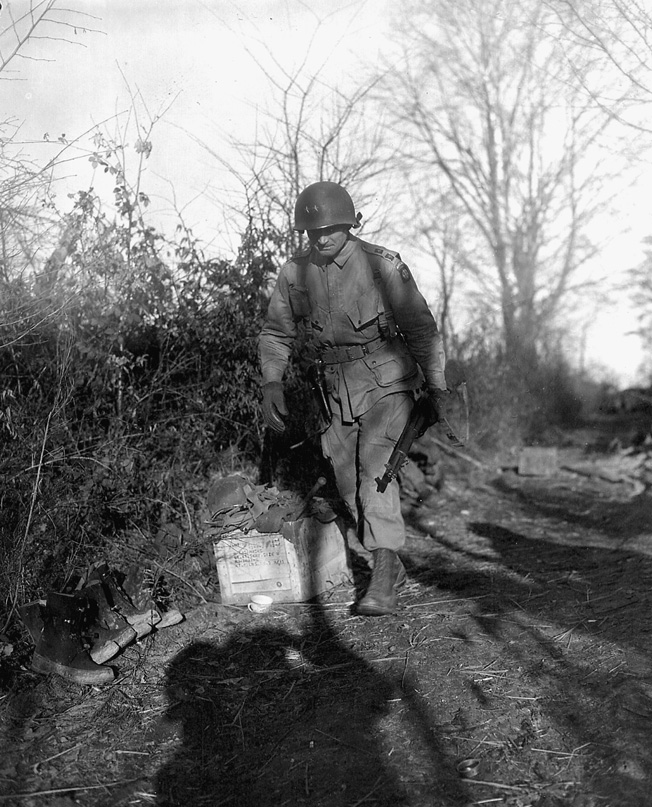
The 82nd rested and refitted, and then went back into action in April 1945. It crossed the River Elbe, and on May 2, Gavin received the surrender of the German 21st Army Group. Threadbare but elegant in field gray, with red collar tabs and an Iron Cross at his throat, Lt. Gen. Kurt von Tippelskirch went to Gavin’s command post and asked for the general in charge. He was directed to Gavin, standing on a street corner wearing his faded jumpsuit and with his M-1 rifle slung over his shoulder. He looked like any other GI except for the two stars on his collar and helmet.
“He looked at me with some disdain,” Gavin reported, “saying that I was too young and did not look like a general to him. It took only a moment to change his mind.”
A Maverick in President Eisenhower’s Army
When the European hostilities ended, Gavin and his division were assigned to the U.S. occupation zone in Berlin. There, Jumping Jim served as the American representative on the City Kommandatura. On Sundays, though still pained by the cracks in his spine, he would drive out to the Tempelhof airfield and make parachute drops “to get the cobwebs out.” He and the All-Americans left Berlin in October 1945, and returned home in December. Gavin and his division proudly led New York City’s victory parade in 1946.
He stayed with the division at Fort Bragg until March 1948, when he became chief of staff of the Fifth Army in Chicago. He was assigned as chief of staff of Allied forces in southern Europe in June 1951, led the Seventh Corps in Germany, served at the Pentagon as assistant chief of staff for plans and research with the rank of permanent lieutenant general, and was appointed chief of research and development, with the status of deputy Army chief of staff, in October 1955.
But Gavin found himself increasingly at odds with the “new look” defense policies of the Eisenhower administration, whereby strategic retaliatory power was emphasized at the expense of conventional forces. Manpower was pared, and there was a slowdown in the development of tactical weapons. The Army was cut from 27 to 15 divisions, and Gavin believed that it was being left unprepared to fight limited wars. He chafed and developed a reputation as a maverick. He was unwilling to watch the Army he loved whittled to a skeleton of its former self.
He went before a Senate preparedness subcommittee in December 1957, and outlined his beliefs with candor and eloquence. The following January, after “much soul-searching,” he reluctantly retired. “I had decided,” he explained, “I could serve my country better by releasing myself from the restrictions necessarily imposed on the military and telling the American people directly what I thought was wrong with the U.S. defense picture.” He worked for 12-14 hours a day on a book, War and Peace in the Space Age, in which he insisted that the only way America could fight a limited war was to expand its forces to permit maximum mobility and flexibility. Gavin proposed the “airmobile” concept.
Published in 1958, the book was reviewed as “imaginative, probing, and sensitive” by a junior senator from Massachusetts named John Fitzgerald Kennedy. Gavin, who had also written Airborne Warfare, which became a standard text in its field, was one of the leading strategists of his generation, and was elated to see several of his proposals adopted during the Kennedy and Lyndon B. Johnson administrations.
Gavin and his wife, Jean, raised five daughters, and in retirement the general played tennis, squash, golf, and handball, and skated, swam, and bowled. He read voraciously, from Tolstoy to Stendhal to Dostoevsky, and took up oil painting. He became vice president of Arthur D. Little Inc., but his corporate career was cut short when President Kennedy asked him in 1961 to become his ambassador to France. Gavin got along well with the irascible French leader, General Charles de Gaulle, and his 18-month tour of duty in Paris was a success.
Gavin wrote another book, on France and the American Civil War, and became a vigorous opponent of the Vietnam War. He suggested in 1966 that U.S. troops in South Vietnam should fall back to fortified enclaves while America sought a diplomatic solution through the United Nations. He believed that the war was a “catastrophe” and that the Army was destroyed from within “because we sent officers out there just to get promoted.” He even considered running for the presidency on an antiwar platform, but abandoned the idea when Eugene McCarthy made a good showing in the New Hampshire primary.
Slim Jim maintained homes in Cambridge, Massachusetts, Cape Cod, and Winter Park, Florida, and kept fit, continued to write, and painted New England and Parisian scenes. He died in Baltimore on February 23, 1990.
Originally Published August 7, 2014
This article is from the July 2005 issue of WWII History Magazine. If you would like to read this and other articles, visit our order page to see which digital editions we have on offer.
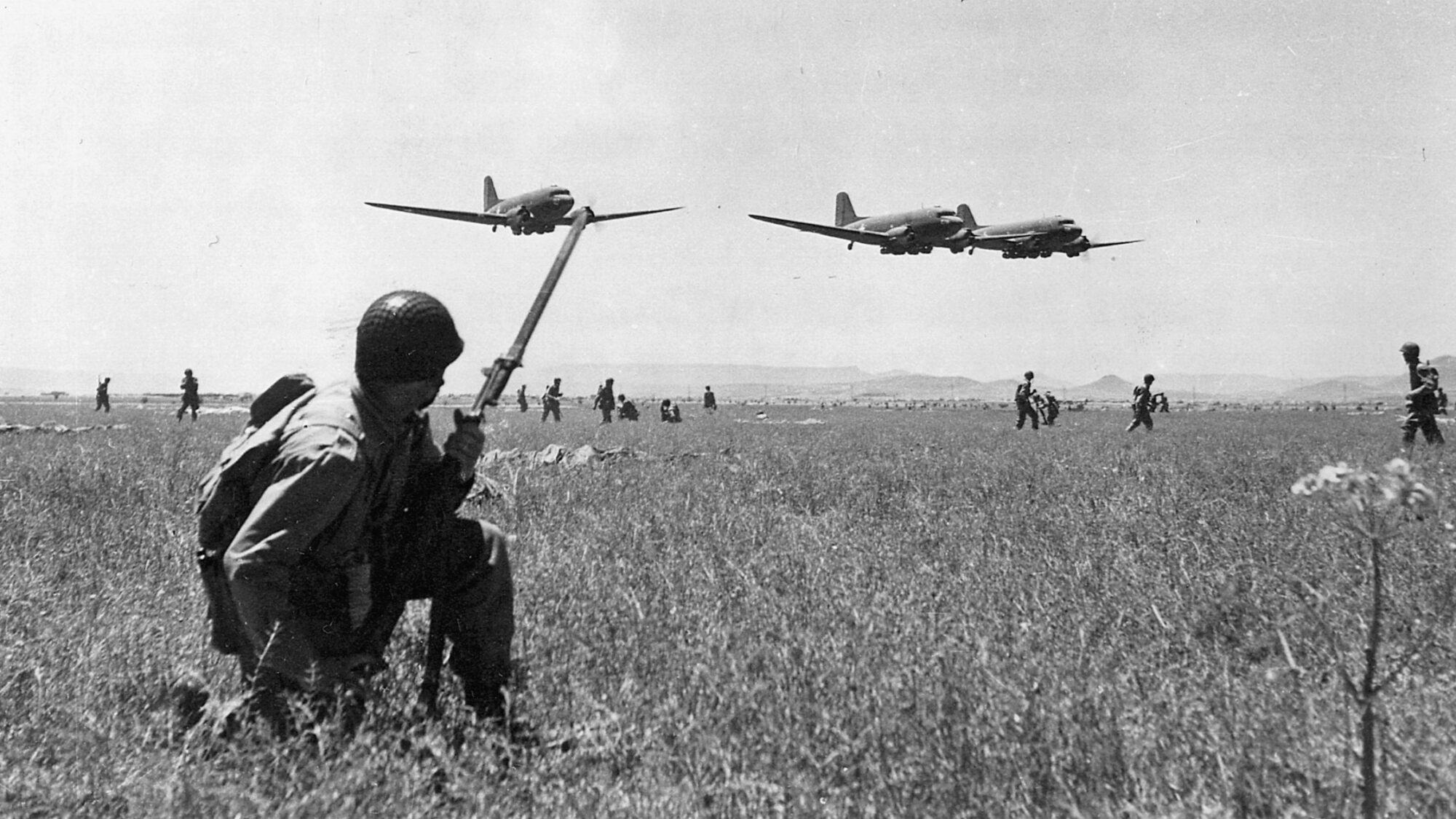
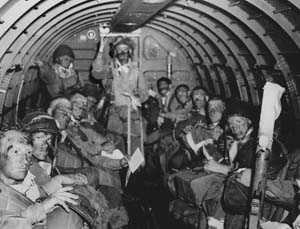
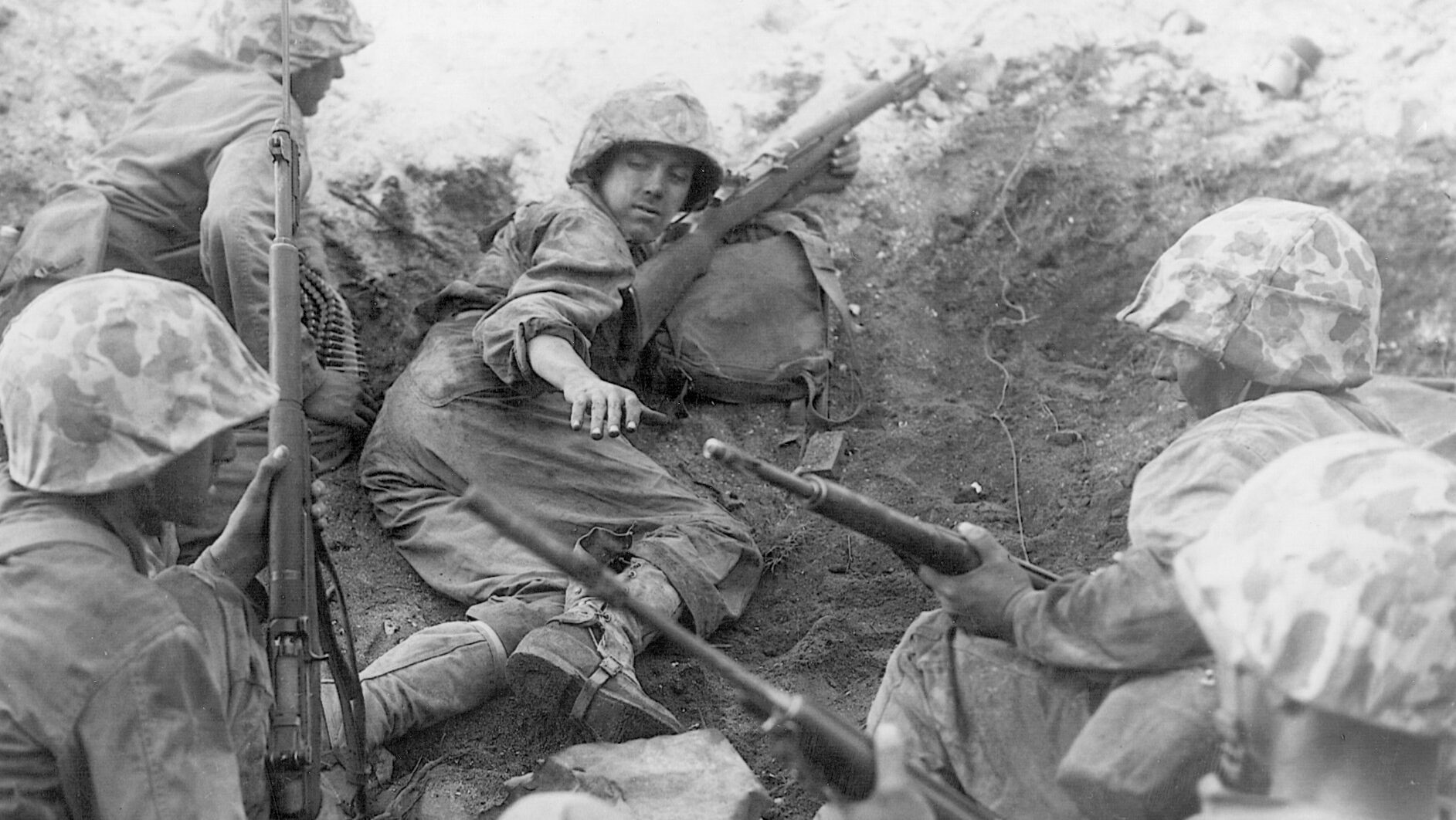
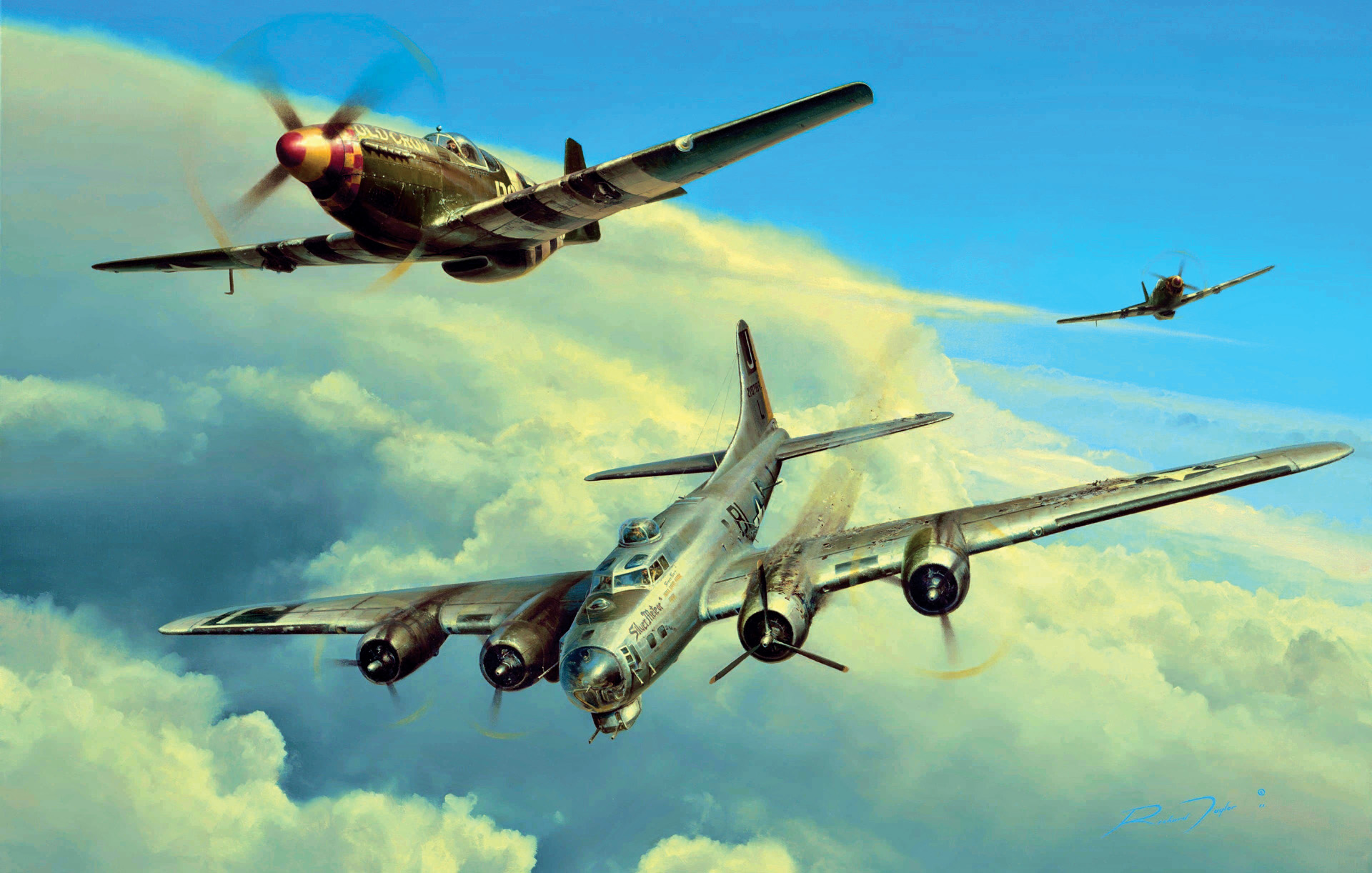
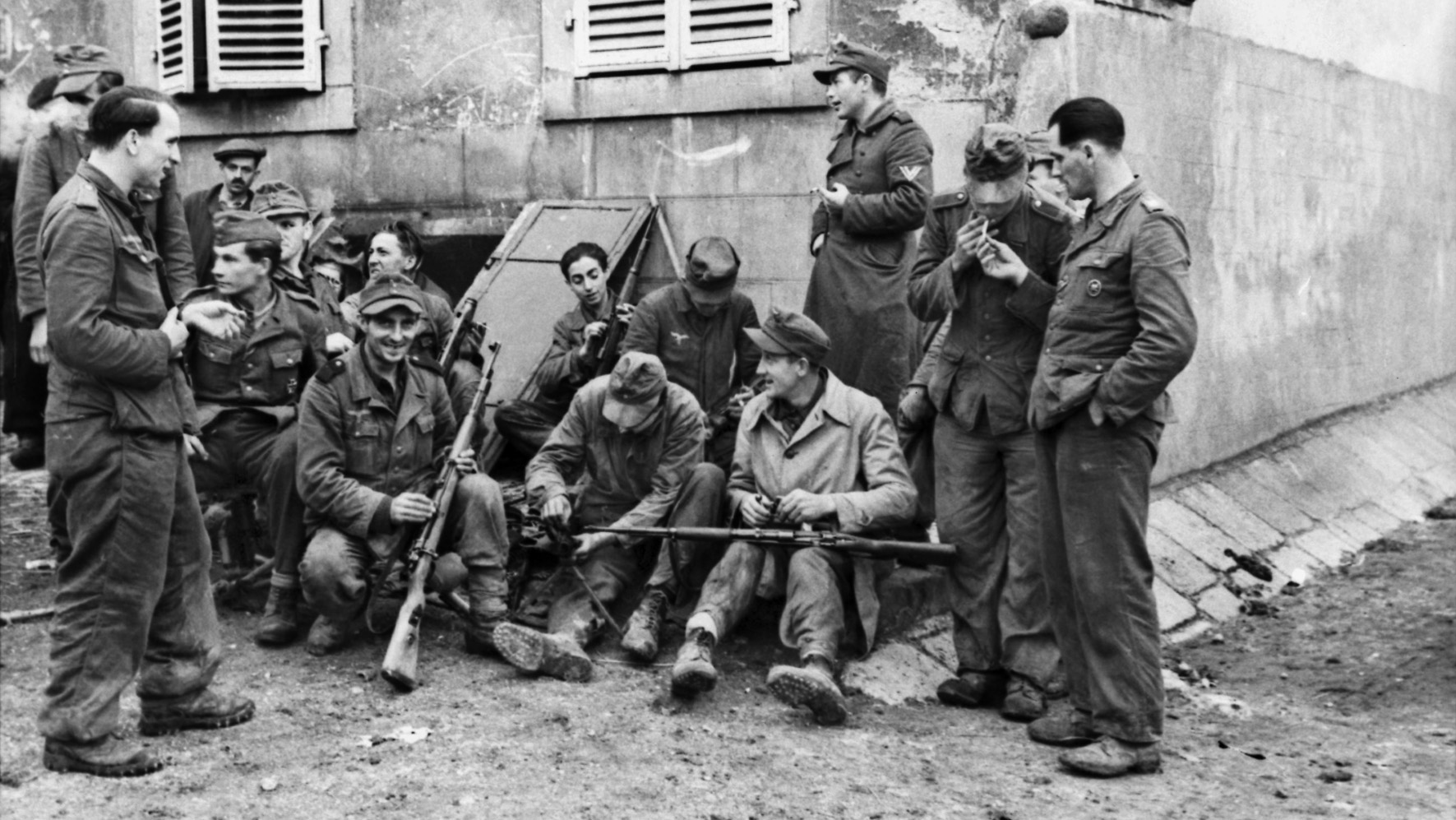
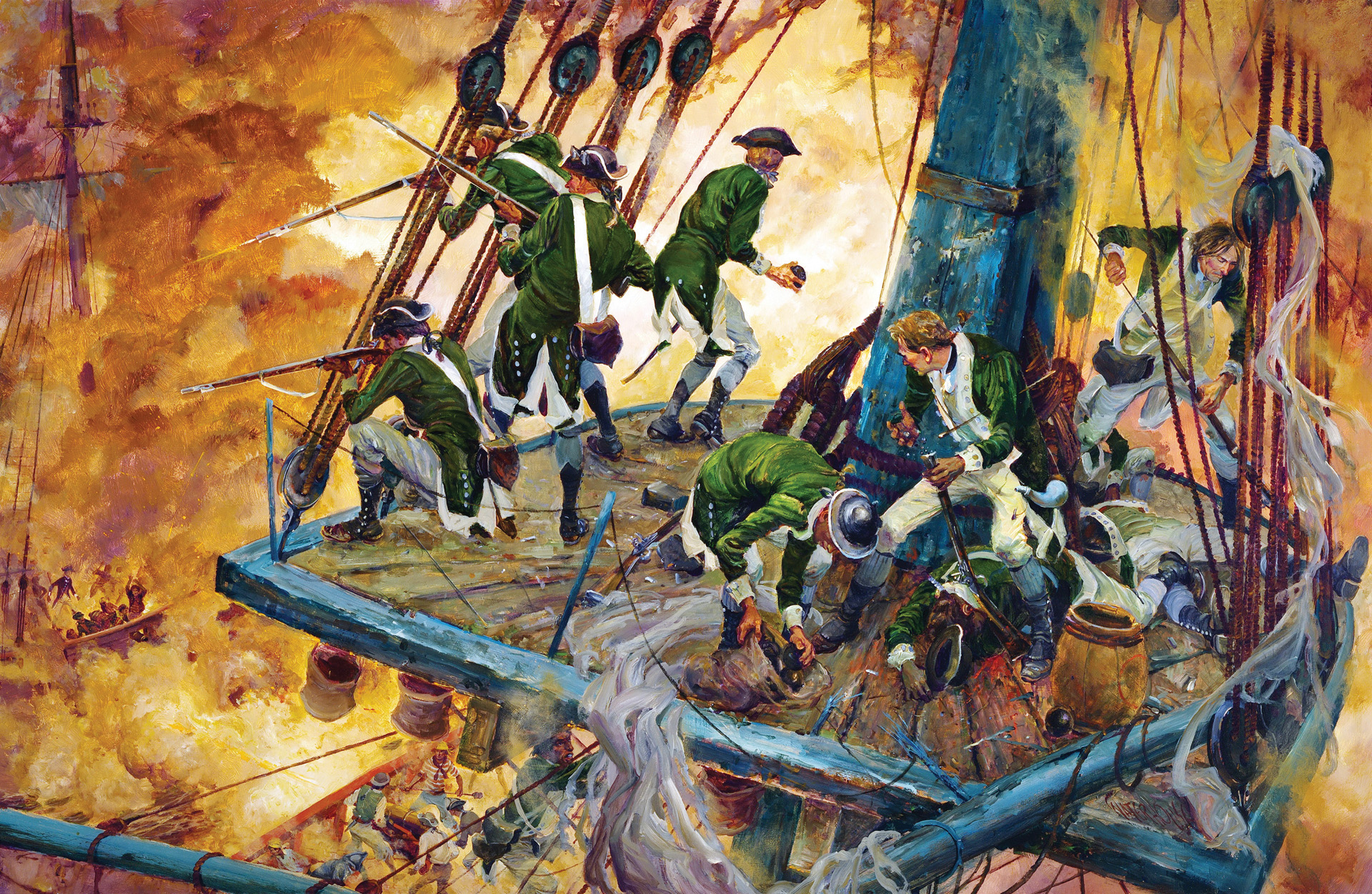
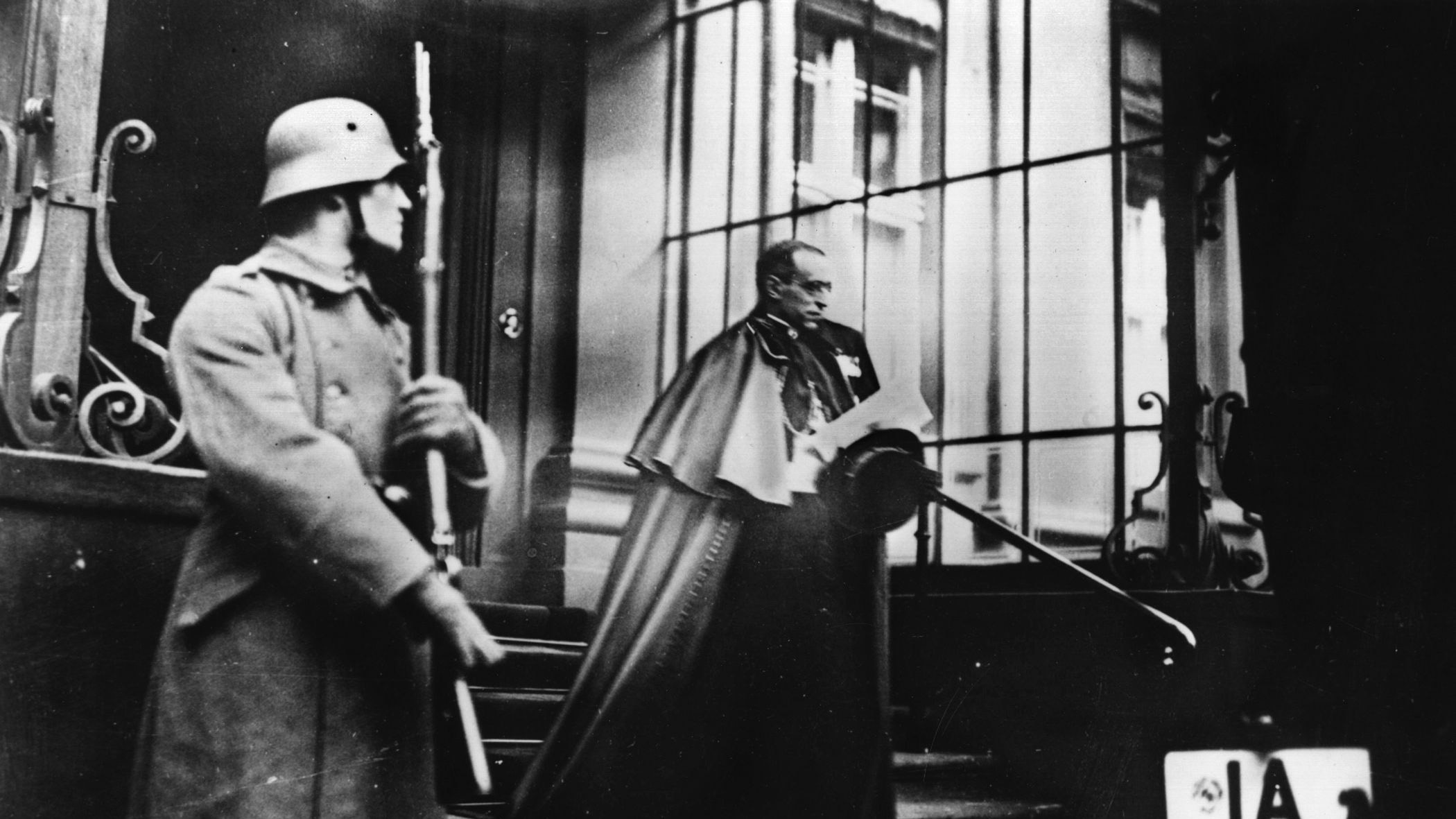
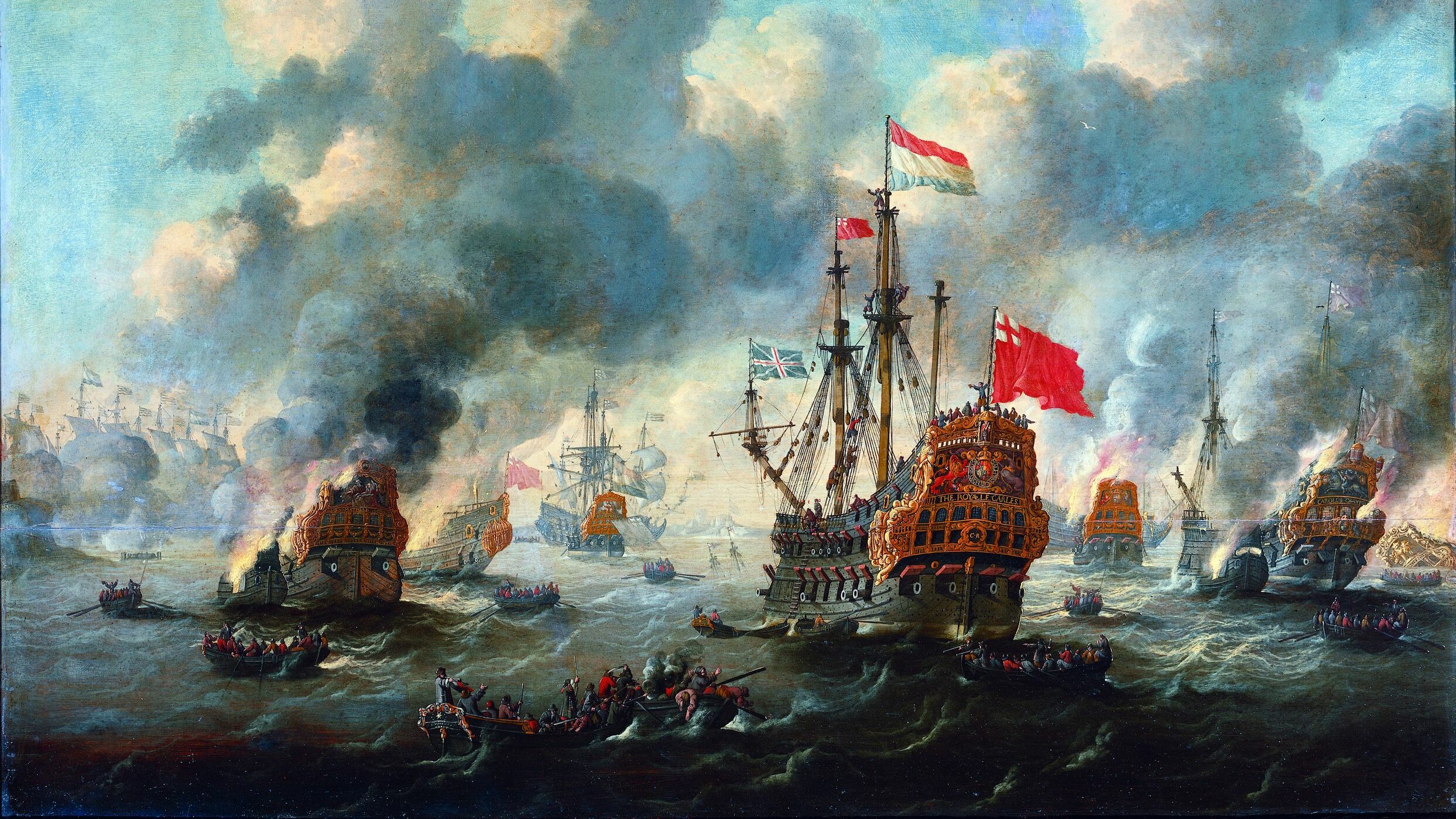
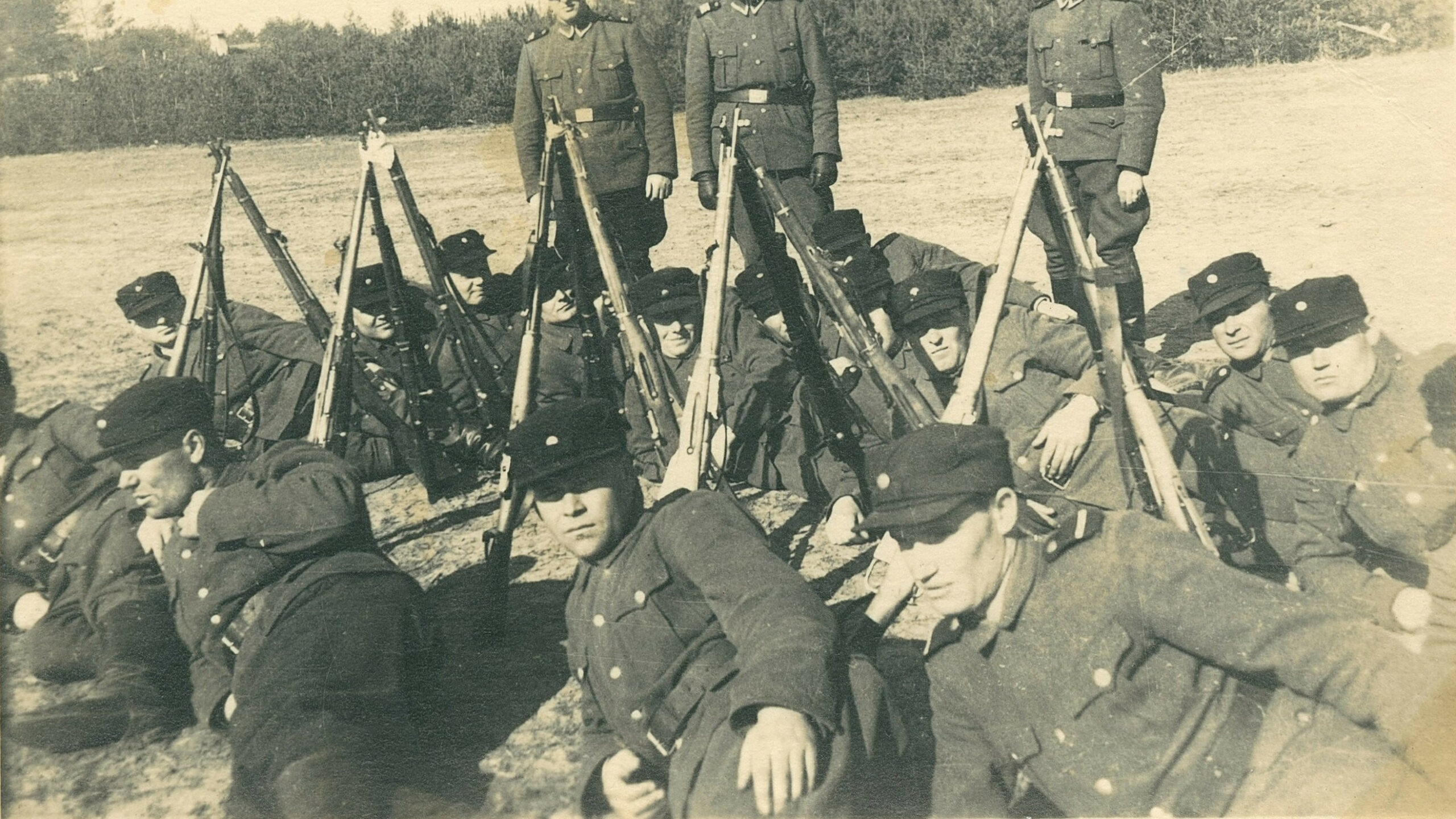
Thanks
My word it would be so refreshing and enlightening to read an American article that ever criticised US forces, for at Nijmegen the failure to take the Nijmegen bridge profoundly affected the outcome. Eventually the Grenadier Guards infantry and 505th PIR took the southern end of the bridge, allowing the tanks to take it under heavy fire.
Gavin was a fine officer as were his division, but his hesitancy or miscommunication with Lindquist affected the outcome. Also the heroic 504th PIR river crossing was probably unnecessary with the fully trained 43rd Division waiting for orders that never came to cross the river, due to Gavin’s insistence his own troops should do it. I suggest at that point, he knew he had messed up and was trying to make amends.